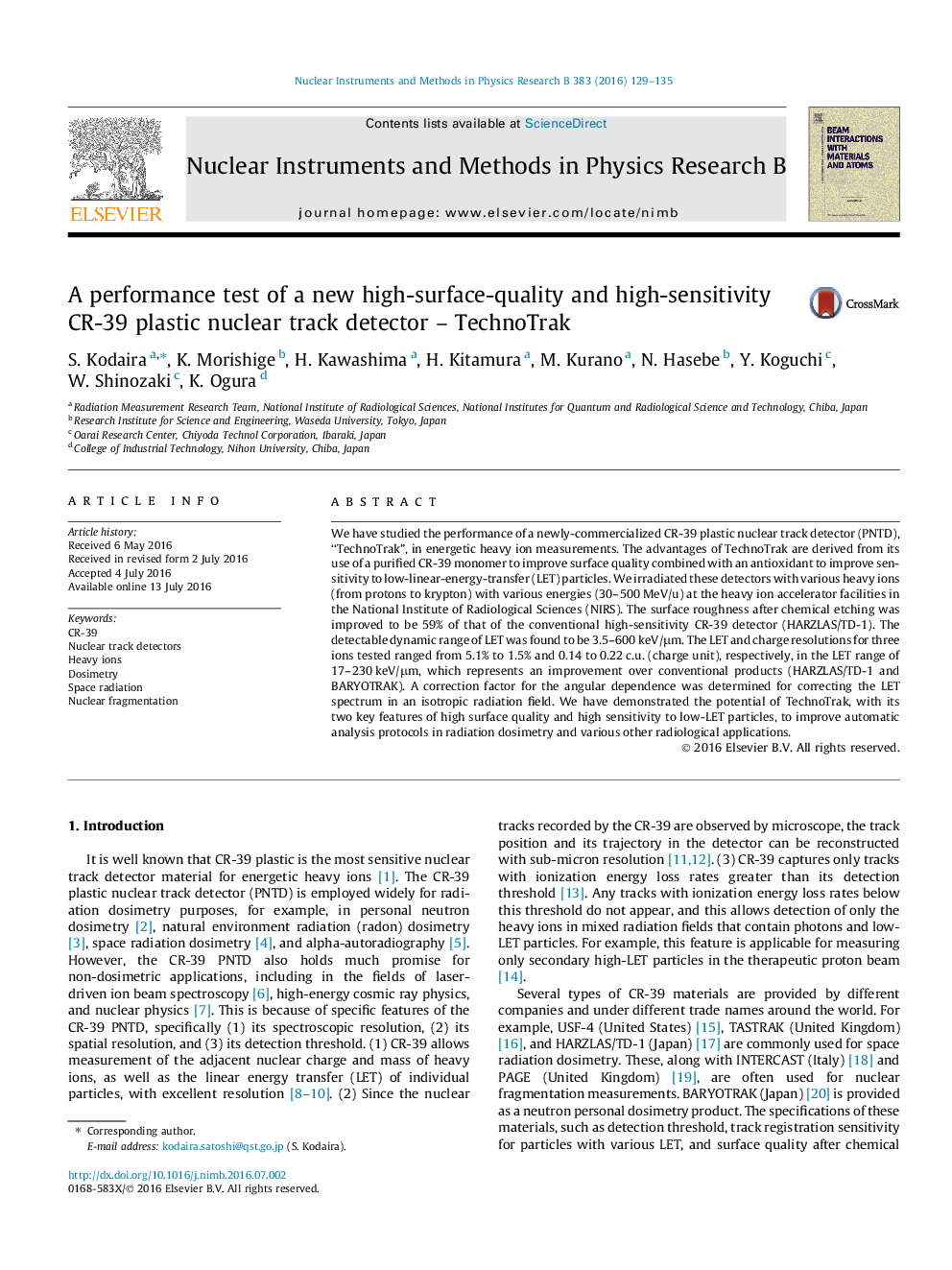| Article ID | Journal | Published Year | Pages | File Type |
|---|---|---|---|---|
| 8039647 | Nuclear Instruments and Methods in Physics Research Section B: Beam Interactions with Materials and Atoms | 2016 | 7 Pages |
Abstract
We have studied the performance of a newly-commercialized CR-39 plastic nuclear track detector (PNTD), “TechnoTrak”, in energetic heavy ion measurements. The advantages of TechnoTrak are derived from its use of a purified CR-39 monomer to improve surface quality combined with an antioxidant to improve sensitivity to low-linear-energy-transfer (LET) particles. We irradiated these detectors with various heavy ions (from protons to krypton) with various energies (30-500 MeV/u) at the heavy ion accelerator facilities in the National Institute of Radiological Sciences (NIRS). The surface roughness after chemical etching was improved to be 59% of that of the conventional high-sensitivity CR-39 detector (HARZLAS/TD-1). The detectable dynamic range of LET was found to be 3.5-600 keV/μm. The LET and charge resolutions for three ions tested ranged from 5.1% to 1.5% and 0.14 to 0.22 c.u. (charge unit), respectively, in the LET range of 17-230 keV/μm, which represents an improvement over conventional products (HARZLAS/TD-1 and BARYOTRAK). A correction factor for the angular dependence was determined for correcting the LET spectrum in an isotropic radiation field. We have demonstrated the potential of TechnoTrak, with its two key features of high surface quality and high sensitivity to low-LET particles, to improve automatic analysis protocols in radiation dosimetry and various other radiological applications.
Related Topics
Physical Sciences and Engineering
Materials Science
Surfaces, Coatings and Films
Authors
S. Kodaira, K. Morishige, H. Kawashima, H. Kitamura, M. Kurano, N. Hasebe, Y. Koguchi, W. Shinozaki, K. Ogura,
